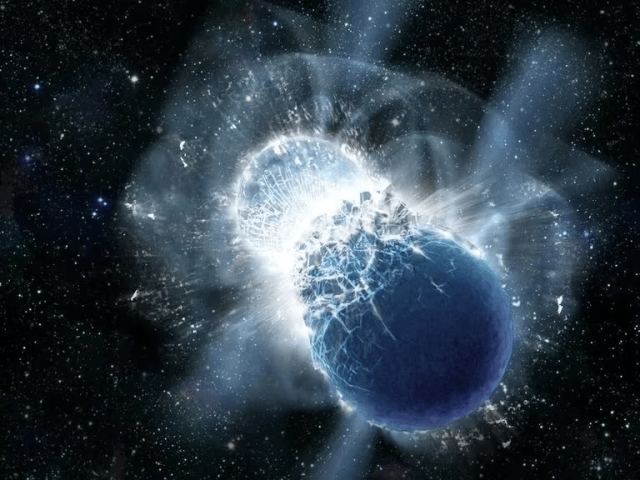
Although all that glitters is not gold, the James Webb Space Telescope was able to determine the presence of this material in the bowels of the universe.
“This is the first time we have been able to verify that metals heavier than iron and silver, such as gold, were produced before us,” explained astrophysicist Eleonora Troja from the University of Rome. . to prove
Troja and the scientists accompanying him on the investigation studied an unusually long burst of high-energy radiation called a gamma ray burst (GRB) and determined that it originated from the collision of two ultradense neutron stars. More importantly, this result enabled the team to observe the light emitted from the same event, confirming that these compounds are the sites that form elements such as gold.
Observations using the James Webb Space Telescope (JWST) and the Hubble Space Telescope have allowed scientists to spot gold and heavy elements, helping to better understand how these powerful neutron star merger events create the universe's only turbulent environments. This is enough to create elements heavier than iron, such as silver and gold, resulting in a flash of light called a kilonova.
“It was exciting to use the powerful eyes of Hubble and JWSD to study kilonovae that we hadn't seen before,” Troja said, noting that GRBs are the most powerful bursts of energy in the known universe and have previously been associated with stellar mergers. Neutrons. But experts say this finding is completely different.
Scientists have noted that these phenomena can be divided into two groups. On the one hand, there are long GRBs lasting more than 2 seconds, and on the other hand, there are short GRBs lasting less than 2 seconds. Although neutron star mergers are associated with short GRBs, long GRBs are believed to result from the collapse of massive stars, not such collisions.
A Cosmic Gold Mine
Stars are like galactic reactors that produce the elements of the periodic table, where the nuclear fusion of hydrogen with helium begins at their cores and the fusion of helium with heavier elements such as nitrogen, oxygen, and carbon continues.
More details at INFOBAE





:quality(85)/cloudfront-us-east-1.images.arcpublishing.com/infobae/KTKFKR763RBZ5BDQZJ36S5QUHM.jpg)